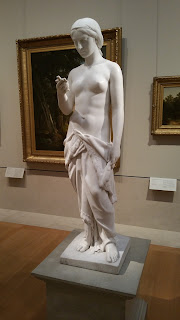For my internship, it became a
regular task for me to walk from the office to a nearby Staples to buy office
supplies. Each time I would walk from the office to Staples, I would pass Saint
Agnes Church. Each day I passed, without fail, there was a man outside asking
for change. St. Agnes is a Catholic church on East 43rd street, it
is famous for being on one of the busiest streets in the city and it’s
beautiful interior. When I asked my boss, the one who sent me to the Staples
every 2 weeks or so, about the reason for such frequent panhandling and the
apparent hospitality on part of the Saint Agnes church to the inhabitants of
their front door, he offered a sharp answer. He coined, “Saint Agnes has always
been a helping hand to the poor and downtrotten” and added whimsically, “I
suppose that is what religion should be all about.”
I do not
know if people meet the criteria required to be considered a religious text,
but when combined with the accidentally wise words of my boss, the reoccurring
image of the panhandlers came to be a symbol of when religion at it’s best.
Furthermore, it seemed deeply relevant to both the state of our American
society and many of the texts discussed over the course of our semester.
Regarding our society, the experience of working in a wealth management office
and passing these panhandlers so often shed light on the growing force of
economic inequality festering itself in our democracy and representing a
pivotal talking point in our approaching presidential election. Regarding our
religious texts, the good works of the Saint Agnes most directly echoes the
work of Dorothy Day. Beyond her radical
politics, Day saw issues in the church order, like the “lack of a sense of
responsibility for the poor” or “there was plenty of charity but too little
justice” (473).
In her
founding of “The Catholic Worker”, Day set up an organization able to provide
extensive hospitality for the “poor and downtrodden”. In Day’s words they “felt
a respect for the poor and destitute as those nearest to God” (474). It is
these feelings of care and love for our fellow people, even those largely
turned away by broader society, which composes the most beautiful apex in
American religion. The work of Dorothy
Day and church’s like Saint Agnes reflect this love and the power it can hold.
Moreover, each day it is growing more imperative for Americans to care for
their impoverished counterparts.
This
message of care and love expands past the impoverished, but also to topics of
tolerance and inclusiveness. Over our course we have seen a history of religious
separatism ranging from the treatment of Catholic American immigrants to the
reprehensible words of Franklin Graham against Islam or cases of discrimination
against LGBT Americans. Amidst a wave of divisiveness that will live on in our
nation’s history with an air of infamy, it is important that symbols like this
man standing in front of Saint Agnes act as a call to assist those who need us,
respect those different from us, and sow love and inclusion whilst weeding out seeds
of hatred and division.











